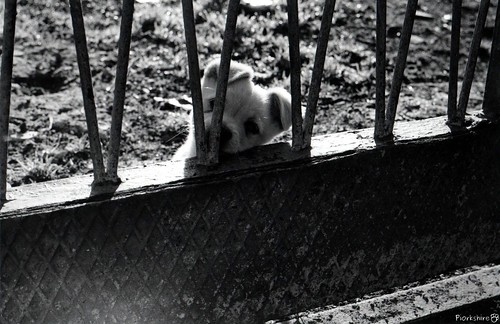
Image : http://www.flickr.com
Before Digital Cameras ever came to be, most of you probably owned a standard 35mm camera with an attachable flash, like my old Nikon F1, which I foolishly sold on Ebay. If you did own one of those, and you were very adept in photography, you'll recall thatlittle nob at the bottom of the camera with a series of numbers from B1...to 4000 ASA/ISO.Simply put, when you bought film which was rated 400 ASA, as an example, you would adjust the nob to reflect an ASA reading of 400 in the small window pane aligned with a small, usually, red arrow.
The point of all this is the following; when you bring your knew digital camera to any large event, it is totally pointless to be using the built-in flash, although you see it all the time by the 100s of flickering lights. The built-in flash is much to small to have any effect when you're 100s of feet from your subject.
Since cameras list the effectiveness of a flash measured in distance or range (3' - 9' etc.), you really have to be very close to the subject for the flash to be fullyeffective.
The ISO designation you should know, is a measure used for light sensitivity. For example, a film with a rating of ISO1000 (considered fast film) is much more sensitive to light than a film with a rating of ISO100, and therefore is better able to capture images in dark surrounding areas. Actually, if you were really good in the old days, we used this to our advantage in combination with the aperture opening of the lens for some really awesome effects. But we won't go there and stick with digital.
So to be understood, digital camera technology uses the same ISO system, but since no film is used, the variable light sensitivity is accomplished by amplifying the signal.Sound confusing! In electronics, as you amplify a signal, you amplify noise levels, such as in a radio which has a weak signal. So you turn it up only to hear more static in the background.
So it was, when you selected a digital camera with a high ISO rating,because the quality of the image was less than desirable. In the early days of digital cameras, this constituted a real problem.
Today, however, this so called noise has been so controlled, that you can buy a digital camera with a high ISO rating reducing the need for a flash...in other words the capability of taking pics from far distances without a flash. In addition, when you set your camera to 'auto', the camera will automatically set the ISO, the aperture opening of the lens, and shutter speed to create the best picture possible.
For more information on understanding how ISO works, make sure you read your manual or check with the manufacturer of your camera. If you don't yet own a digital camera, here's a tip; make sure you buy the highest megapixel possible. It cost much more but well worth the investment. You won't regret it!
Tidak ada komentar:
Posting Komentar